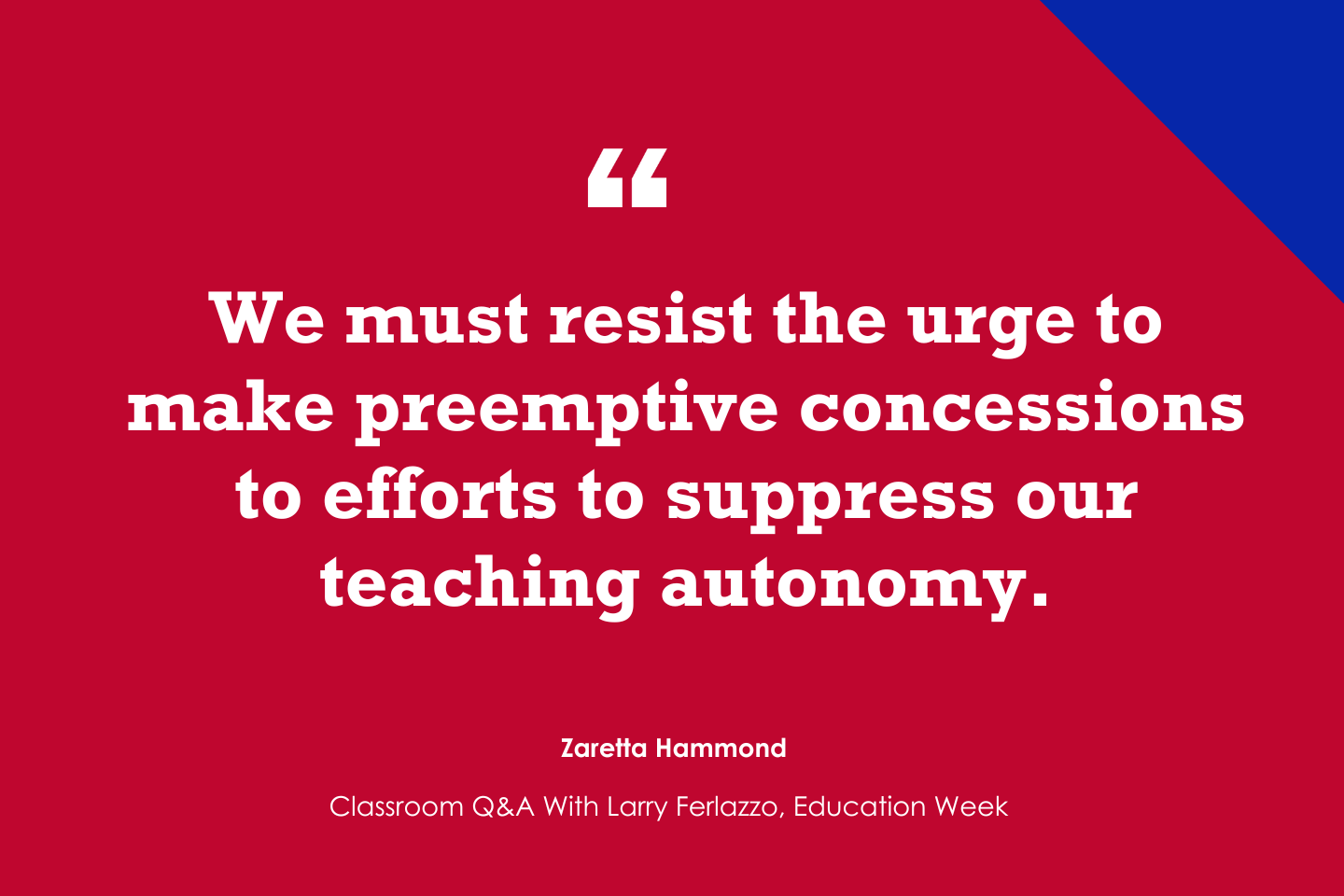Excerpted from What Teachers Need to Know About Memory by Jonathan Firth and Nasima Riazat. Copyright (c) 2024 by Corwin Press, Inc. All rights reserved.
Some of the most effective learning strategies are those known as desirable difficulties. These make learning more effortful but are useful (desirable) because they make forgetting less likely, and help to ensure that what is practiced is both retained and can be used flexibly in the future.
However, could it be the case that for some learners, there are already enough difficulties in the classroom, without adding more? After all, the level of difficulty involved might be expected to vary among learners. What one learner finds quite difficult may be impossibly challenging for another, perhaps leading them to give up entirely. In short, we need to consider how to ensure that desirable difficulties are always desirable! According to a 2018 study, “If a learner does not have the background knowledge or skills to respond successfully to a given difficulty, it becomes an undesirable difficulty.”
First, let’s briefly recap the desirable difficulties and why they work. Desirable difficulties increase challenge in a way that is useful and pedagogically appropriate. Examples of strategies that fall into this category include retrieval or self-testing, spacing out practice, variation in practice, self-explanation when reading notes, and interleaving. These factors make classroom tasks such as reading, discussions and project work more effective, but in the process, the tasks become subjectively harder, and students tend to make more errors.
The reason that these strategies work so well is because they mimic real life. In other words, the more similar we make the learning/practice situation to the real thing, the better information and skills can be retained and later used. A greater correspondence between the practice situation and later use makes it easier for learners to transfer what has been learnt.
We should therefore ensure that these things are used for all learners, and they can be used straight away and at all ages. There isn’t a group of pupils for whom being able to retain and apply what they study over the long term is unimportant! We shouldn’t see these strategies as dispensable, able to be dropped if students are finding things too challenging. What can be changed is the level of challenge, and this is surprisingly straightforward. However, it is best tackled one strategy at a time.
Retrieval practice
In general, researchers recommend that students should be getting a success rate of around 80% when trying to retrieve prior learning. So, for example, you might aim to pitch the quiz at a difficulty level that means most learners are getting a few answers wrong.
The way to adjust this for struggling learners is not to dispose of the quiz entirely, but to modify the difficulty level for different students, while ensuring that all are still prompted to retrieve. Some modifications could include:
providing hints and cues, such as an additional sentence reminding them of a previous example;
reducing the number of wrong choices on a multiple-choice quiz;
giving the entire quiz a little sooner to these pupils than to the rest of the class (though ideally, it should still not be given straight away).
Less helpful modifications include anything that means the learner is not retrieving things from memory. Don’t have them work with a partner who will recall the answers, for example, and don’t turn a retrieval task into a copy-the-answers task.
Spacing
Spacing out practice is hard, but also effective. As teachers, we can bear in mind that the more time that has passed, the more our learners will have forgotten. We can also try to judge (using prior experience) how much forgetting of a topic is likely to have occurred. Researchers recommend that educators schedule review tasks for a point in time when learners are on the verge of forgetting but have not yet completely forgotten. To put it another way, a little bit of forgetting is useful, but we shouldn’t leave it too long. Revisiting learning should be planned and factored in as part of a unit of learning.
The speed of forgetting will depend not just on the material, but on the learner. Those with less well-developed schemas, or who practiced less effectively the first time the material was studied, will forget more rapidly. As the teacher, you can experiment with scheduling practice at different times for different learners.
Varied practice
Varied practice can happen in a number of ways, but some of the most straightforward include varying the format of the task, the context, or the place where practice takes place. Asking physics learners to write a short essay explaining particles instead of completing their usual practice problems is an example of varying the task. Studying outside instead of indoors is varying the location. For example, taking students to a local seaside as part of a geography lesson to measure ‘shore drift’ for themselves, rather than seeing a short video of the process (this example is active, as well as varied).
The level of variation can range from high to low. For struggling learners, variation can be considered a bit like the ‘spiciness’ level of food – it can be stronger or weaker according to what is needed. For example, it would be easier to transfer what has been learnt about vectors from one written task to another, and harder to transfer the same principles to a real scenario involving plane travel.
In situations where it is impractical to vary things in different ways for different learners (for example, where the whole class is going to practice something outside), we can help struggling learners to cope with the difficulties by providing hints and reminders.
Self-explanation when reading notes
Self-explanation is in some ways one of the easiest desirable difficulties to use, as it can be applied to the forms of study and practice that a lot of learners tend to choose. Many of them prefer to study from notes or do practice problems, and could be prompted to self explain.
The problem here lies in that some of the learners who would benefit most from this technique will tend to avoid doing it spontaneously, in part because struggling learners often lack awareness of their own weaknesses. They mistakenly think that their study habits are more effective than they are.
Again, it is not helpful to avoid the desirable difficulty, but rather to find ways to provide support:
learners could be encouraged to use Cornell notes, a format which includes a box where they write a summary at a later date;
this summary box could feature self-explanation prompts, for example. Explain what insights this provides, and how it links to what you knew before;
if they find it too hard to figure out which terms to self-explain, these could be highlighted in their notes by the teacher.
Interleaving
Interleaving has been used across a range of learning situations, including with very young children and the elderly. In addition, the underlying principle – inductive learning via categorizing similar and different types of item – is a process that even young babies go through when they are first learning about the world.
For that reason, there is certainly no reason to avoid interleaving with struggling learners. They may in fact find it a more straightforward and intuitive way to learn than more ‘direct teaching’ approaches, in part because it involves learning via examples.
All the same, interleaving can be demanding on working memory because learners have to retain multiple examples or categories. Ways to manage this difficulty might include:
showing fewer categories at a time – for example, if you were using interleaving to teach types of lake in geography, just two or three types of lake could be shown at a time;
showing examples at the same time (e.g., on the same slide) rather than one after another (e.g., on two different slides spaced apart), making comparisons less demanding of working memory;
making the similarities and differences between examples a little more obvious by giving hints such as by asking ‘What difference in shape is there between these example lakes?’
A common theme for all of these strategies is that the level has to be appropriate. By making learning more challenging, it makes the practice situation more like the circumstances when learning is used in real life – and this has genuine benefits. Too difficult, and some of these benefits can be lost.
Overall, it’s worth bearing in mind that these techniques work with all ability levels. Most have been demonstrated in the learning of pre-school children and even animals. Therefore, school students can cope with them in some form. The key is to ensure that the difficulty level is appropriate.
Bear in mind also that when difficulties are combined – for example, applying both spacing and retrieval to a revision activity – doing so will make things extra challenging. If it is hard to repeat a task after a delay, it will be even harder to do a quiz on it after a delay! For this reason, additional support and modifications may be needed in such cases, even for stronger and more confident students.
Jonathan Firth is an author, teacher and researcher focused on the psychology of education. He has run workshops on metacognition, exam skills and debunking neuromyths in education.
Nasima Riazat is an author, lecturer and school leader. She is also the regional lead for WomenEd in the North West and the founder of #PhDchat.
Retrieval practice, spaced practice and interleaving are some of the ways to help students retain what they learn. MindShift








